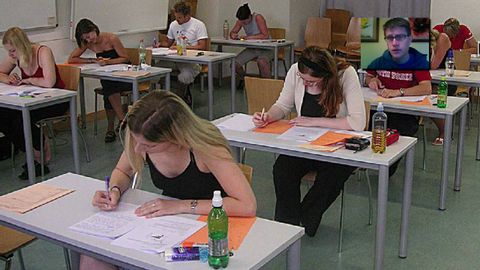
Subtitles & vocabulary
Metacognition: Learning about Learning
00
彭彥綸 posted on 2013/10/14Save
Video vocabulary
learn
US /lɚn/
・
UK /lɜ:n/
- Verb (Transitive/Intransitive)
- To get knowledge or skills by study or experience
- To find out something.
A1
More give
US /ɡɪv/
・
UK /ɡɪv/
- Uncountable Noun
- Degree of flexibility in something, a material
- Transitive Verb
- To hand over or present something to someone
- To cause someone to have or experience something
A1
More Use Energy
Unlock All Vocabulary
Unlock pronunciation, explanations, and filters
